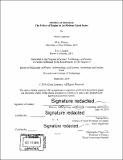| dc.contributor.advisor | Harriet Ritvo. | en_US |
| dc.contributor.author | Laurence, Alison(Alison G.) | en_US |
| dc.contributor.other | Massachusetts Institute of Technology. Program in Science, Technology and Society. | en_US |
| dc.coverage.spatial | n-us--- | en_US |
| dc.date.accessioned | 2020-03-09T18:51:55Z | |
| dc.date.available | 2020-03-09T18:51:55Z | |
| dc.date.copyright | 2019 | en_US |
| dc.date.issued | 2019 | en_US |
| dc.identifier.uri | https://hdl.handle.net/1721.1/124067 | |
| dc.description | Thesis: Ph. D. in History, Anthropology, and Science, Technology and Society (HASTS), Massachusetts Institute of Technology, Program in Science, Technology and Society, 2019 | en_US |
| dc.description | Cataloged from PDF version of thesis. | en_US |
| dc.description | Includes bibliographical references. | en_US |
| dc.description.abstract | Long extinct animals have a powerful hold on the American popular imagination. Dinosaurs, in particular, have been iconic and pervasive representatives of a planetary past for much of the twentieth century. While natural history museums are the most obvious spaces in which to encounter extinct animals, these scientific venues have never held exclusive rights to the charismatic mega fauna of the planet's past, nor have they controlled their cultural meanings entirely. This dissertation examines sites in which American publics have encountered extinct animals through interrelated case studies that span the twentieth century, including the American Museum of Natural History's fossil halls, Depression-Era world's fair exhibits, the contested construction of a Pleistocene Park at the La Brea Tar Pits of Los Angeles, Sinclair Oil Company's use of dinosaurs as spokes-creatures for oil culture, and the dinosaurs that currently draw visitors to young earth creationist museums. | en_US |
| dc.description.abstract | While detailing these diverse exhibitions, I dig into who exhibits long extinct life, what these exhibits say about the deep past, and how diverse publics have embraced and pushed back against these stories, demonstrating the role of popular display in transforming fossilized animals from scientific specimens to consumer objects and artifacts of everyday American life. Further, I show how representations of the planetary past and creatures that inhabited the world before humans are inflected with contemporary concerns and serve as vehicles for human values. The exhibition of dinosaurs at the Creation Museum is the most conspicuous contemporary example of extinct animals operating as didactic instruments, deployed to serve a politically interested institution's agenda. While sensational and unusually explicit in its aims, this move is not unique. | en_US |
| dc.description.abstract | Since the debut of dinosaur models in Victorian England, three-dimensional scenes from deep time have staked a claim in the political and cultural contests of their moment. From imperial apologia to biblical apologetics, the mute and mutable life forms of the planetary past have been used in defense of diverse narratives. Across all of these case studies, I tease out the explicit and implicit values embedded in these exhibits, emphasizing the presentist human interests that have been mapped onto extinct life. | en_US |
| dc.description.statementofresponsibility | by Alison Laurence. | en_US |
| dc.format.extent | 292 pages | en_US |
| dc.language.iso | eng | en_US |
| dc.publisher | Massachusetts Institute of Technology | en_US |
| dc.rights | MIT theses are protected by copyright. They may be viewed, downloaded, or printed from this source but further reproduction or distribution in any format is prohibited without written permission. | en_US |
| dc.rights.uri | http://dspace.mit.edu/handle/1721.1/7582 | en_US |
| dc.subject | Program in Science, Technology and Society. | en_US |
| dc.title | Afterlives of extinction : the politics of display in the modern United States | en_US |
| dc.title.alternative | Politics of display in the modern United States | en_US |
| dc.type | Thesis | en_US |
| dc.description.degree | Ph. D. in History, Anthropology, and Science, Technology and Society (HASTS) | en_US |
| dc.contributor.department | Massachusetts Institute of Technology. Program in Science, Technology and Society | en_US |
| dc.identifier.oclc | 1142180365 | en_US |
| dc.description.collection | Ph.D.inHistory,Anthropology,andScience,TechnologyandSociety(HASTS) Massachusetts Institute of Technology, Program in Science, Technology and Society | en_US |
| dspace.imported | 2020-03-09T18:51:54Z | en_US |
| mit.thesis.degree | Doctoral | en_US |
| mit.thesis.department | STS | en_US |
